Providing a safe and secure shelter for hummingbirds isn’t just an act of kindness towards these tiny winged wonders; it also brings numerous benefits to your environment and provides you with an opportunity to observe their captivating behaviors up close. In this article, you will learn all about the fascinating world of hummingbirds and learn how to create suitable shelters for them. From understanding their unique characteristics and the role of shelters in their lives to exploring both natural and artificial shelter options, you’re in for an insightful journey that will help you become a beacon of hope for these enchanting creatures.
Contents
Getting To Know Hummingbirds
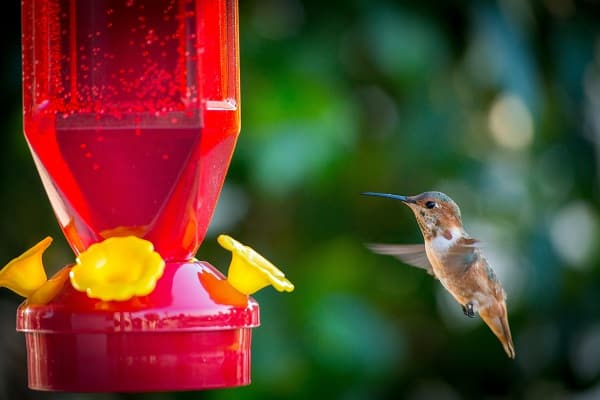
Hummingbirds, with their iridescent colors and incredible flying skills, are among nature’s most intriguing creatures. These birds, which are typically 3 to 5 inches long, have an astonishingly rapid wing-flapping rate, allowing them to hover in place, fly backward, and even upside-down. Their high metabolism necessitates frequent feeding, leading to the characteristic humming sound as they zip between flowers. Hummingbirds, like many other bird species, are migratory, with different species favoring specific regions during various seasons.
While they might seem resilient and hardy, hummingbirds are actually quite vulnerable. Predators, harsh weather conditions, and human encroachment into their natural habitats pose substantial threats. This underscores the importance of providing them with suitable shelters to rest, protect themselves from unfavorable conditions, and breed successfully.
The Importance Of Shelters For Hummingbirds
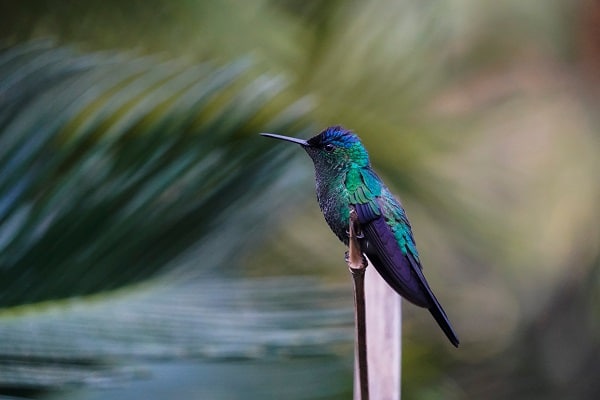
Shelters play a critical role in the life of hummingbirds. These tiny creatures need a safe and comfortable place to rest, as they spend a large portion of their day feeding to sustain their high-energy lifestyle. A secure shelter shields them from inclement weather and predators, providing a safe spot to rest and rejuvenate. Additionally, female hummingbirds require safe places to build their nests and raise their young.
Unfortunately, rapid urbanization and deforestation have led to the loss of natural habitats for hummingbirds. Gardens, parks, and backyards in urban and suburban areas often serve as substitutes for these lost habitats. By providing suitable shelters in these spaces, you can help contribute significantly to ensuring their survival and propagation.
Natural Shelters For Hummingbirds
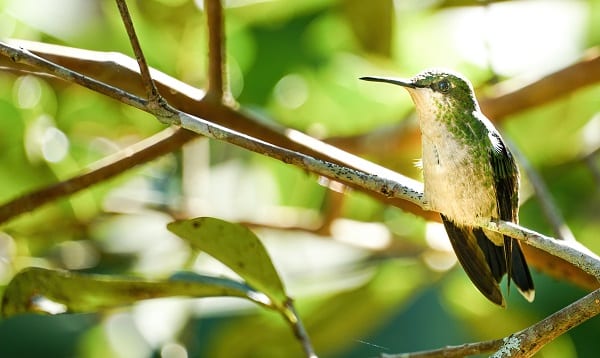
One of the best ways to provide shelter for hummingbirds is by incorporating specific plants into your landscape. Trees and shrubs can offer excellent cover and a safe haven for these birds. Species like oak, maple, and pine trees are often favored by hummingbirds as they provide plenty of branches for perching and nesting.
When it comes to shrubs, consider those that provide not only shelter but also a source of nectar, such as azaleas, rhododendrons, and honeysuckle. Native plants are particularly beneficial as they are well-suited to the local climate and soil conditions and are more likely to attract native hummingbird species. Furthermore, they often require less maintenance and water than non-native plants, making them an environmentally-friendly choice.
Artificial Shelters For Hummingbirds
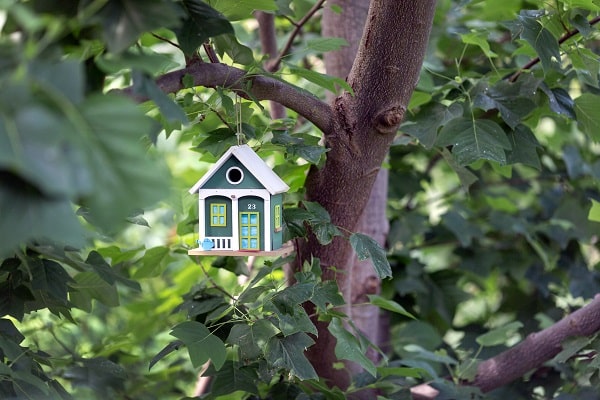
For those who don’t have the space for large trees or shrubs or for anyone looking to supplement natural shelters, artificial structures can be a good solution. Birdhouses designed specifically for hummingbirds are one of the most popular options. These aren’t your typical birdhouses, though. Hummingbird houses are generally smaller, with entrance holes just large enough for a hummingbird to fit through, providing protection from larger birds and predators.
Another consideration is the material of the hummingbird house. Natural materials like wood are preferable as they blend well into the environment and provide good insulation. Avoid using metal, as it can overheat in the sun. Design-wise, a hummingbird house should have a secure base for nesting, with some models featuring built-in perches for resting.
How To Create A Hummingbird House
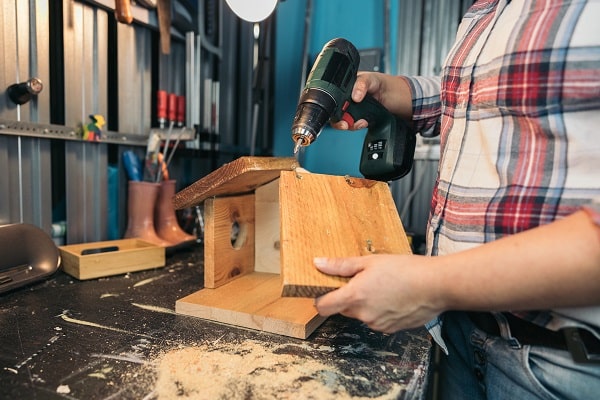
Creating a hummingbird house can be a fun and rewarding DIY project. The first step is to gather your materials. You’ll need untreated wood for the construction, as it’s durable and safe for birds. The house should be around 5×5 inches with a height of about 8 inches. It should have a small entrance hole, approximately 1 inch in diameter, to deter larger birds and predators.
When building your hummingbird house, consider incorporating a sloping roof to allow rainwater runoff and perhaps small ventilation holes to keep the inside cool during warmer weather. The interior should be smooth to prevent predators from climbing inside, but you could add some horizontal grooves on the inside wall below the entrance to help the baby birds climb out when they are ready to fledge. Remember not to include a perch on the outside as it can invite predators.
Buying A Hummingbird House
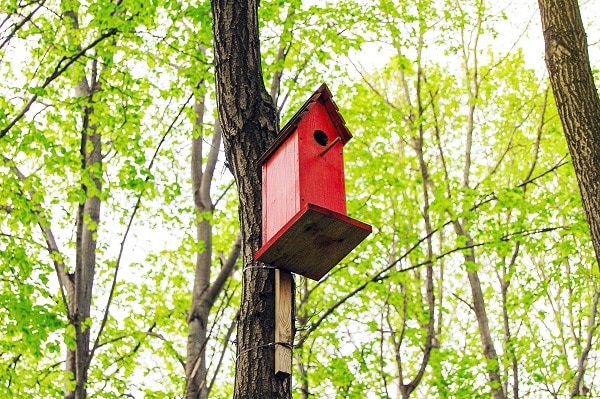
If you prefer buying a hummingbird house over making one, there are plenty of options available online and in your local home improvement stores. When purchasing, pay attention to the house’s size, material, and design. Ensure the dimensions are suitable for hummingbirds, with a small entrance hole to prevent larger birds from invading. The material should be durable and non-toxic, with wood being the most preferred.
It’s also beneficial to choose a house with an easy-open feature for cleaning and monitoring. The design should provide protection from the elements and predators. You can find many reputable vendors that sell hummingbird houses, such as Wild Birds Unlimited, Amazon, and eBay. Just be sure to read customer reviews and ratings to make an informed choice.
Placing The Shelter
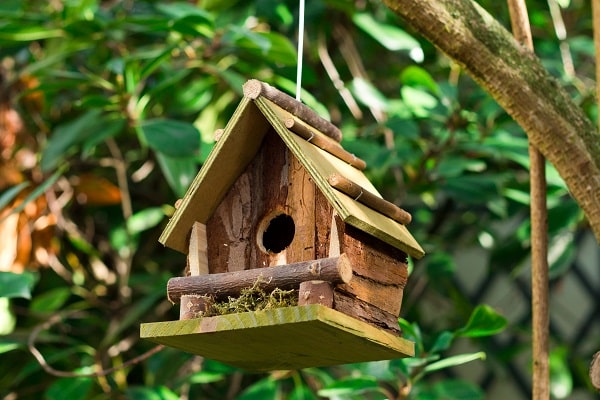
The placement of your hummingbird house is critical to its success. Hummingbirds prefer a quiet, sheltered spot for their nests, so choose a location that’s relatively out of the way yet still within your sight for observation. The house should be hung at a height of about 10-15 feet off the ground, preferably on a tree branch or under a sheltered porch.
Avoid places where the house is exposed to direct sunlight all day, as this can cause overheating. Similarly, ensure it’s not in a spot that’s overly windy or exposed to harsh weather. The house should be visible but not directly in the path of human traffic. It’s also a good idea to place it away from bird feeders to avoid attracting larger birds that might disturb the hummingbirds.
Maintaining The Hummingbird Shelter

Maintenance plays a key role in ensuring that your hummingbird house remains a safe and attractive nesting site. The house should be cleaned at least once a year, ideally at the end of the nesting season. You can use a solution of one part bleach to nine parts water to sanitize the house, followed by a thorough rinse with water.
Make sure to check the house regularly for signs of damage or deterioration and repair or replace it as needed. However, avoid checking the house too frequently when it’s occupied, as this could disturb the hummingbirds. A well-maintained hummingbird house not only increases the likelihood of it being used but also helps keep the birds healthy.
Do Your Part In Providing Shelter For Hummingbirds!
Providing a shelter for hummingbirds is a wonderful way to give back to nature and observe these amazing creatures. Not only will it provide an attractive addition to your garden, but you will also be making a vital contribution to wildlife conservation in your area! Whether you decide to go with a store-bought hummingbird house or build one yourself, you will be rewarded with the privilege of being able to observe these beautiful birds up close. Do your part in providing shelter for hummingbirds – they deserve it!


